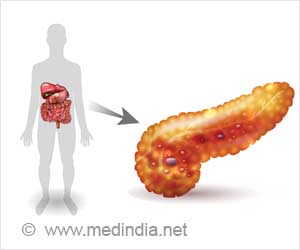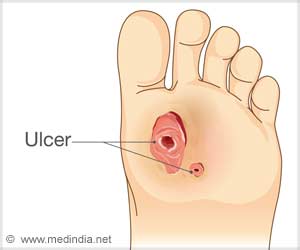Components called conjugated linoleic acids (CLA) present in dairy products help diabetes in mice, according to a Penn researcher.
Components called conjugated linoleic acids (CLA) present in dairy products help diabetes in mice, according to a Penn researcher. These fatty acids have shown good results in trials and could make way for treating the condition without the need for synthetic drugs.
"The compounds are predominantly found in dairy products such as milk, cheese and meat, and are formed by bacteria in ruminants that take linoleic acids – fatty acids from plants – and convert them into conjugated linoleic acids, or CLA," says Jack Vanden Heuvel, professor of molecular toxicology in Penn State's College of Agricultural Sciences and co-director of Penn State's Center of Excellence in Nutrigenomics.Researchers first became interested in CLA when it was shown to inhibit a variety of cancers such as breast, skin and colon in mice, and further research showed effects on circulating cholesterol and inflammation. These effects are the same as the newest generation of synthetic drugs used to treat diabetes in humans.
These synthetic drugs act by triggering a set of nuclear receptors called PPAR. In addition to being targets for a variety of clinically effective drugs, PPARs belong to a large family of proteins, and their biological purpose is to sense fatty acids and fatty acid metabolites within the cell, says Vanden Heuvel.
When the synthetic drugs interact with these protein receptors, it turns the receptor "on," making it an active form of the protein, which then interacts with DNA and regulates gene expression. This increases the enzymes that process fatty acids and also increases the tissues' sensitivity to insulin.
"We wondered if CLA was using the same mechanism, in which case it could be used as an anti-diabetes drug," Vanden Heuvel says.
To test the idea, he used CLA on mice prone to adult onset (Type-2) diabetes. Results indicated that the mice had an improvement in insulin action, and a decrease in circulating glucose. Also, the mechanism was indeed similar to that of the drugs.
Advertisement
Early human trials indicate that when administered for longer than 8 weeks, CLA improves the body's misregulation of insulin and lowers the level of glucose in the blood in patients with adult onset, or Type-2 diabetes, the most common form of this disease.
Advertisement
"Adult-onset diabetes is fast becoming an epidemic and is largely associated with poor diet and nutrition and other lifestyle issues," Vanden Heuvel says. The reason for the increase in diabetes may have to do with the ratio of so-called "good" and "bad" fats, with the average American diet containing too much of the "bad" fats. CLA, whose effect is very similar to fish oil, a source of "good" fat, could prove beneficial against Type-2 diabetes.
"And compared to the synthetic drugs used to treated this disease, CLA does not cause weight gain and may in fact decrease overall body fat," says Vanden Heuvel, who has been granted a patent on the new method of treating diabetes with CLA.
Contact: Amitabh Avasthi
[email protected]
814-865-9481
Penn State
Source: Eurekalert










